Director – Ron Howard – 2022 – US – Cert. 12a – 147m
****
A dramatisation of the 2018 Thailand boys’ football team cave rescue, with the rescuers played by name actors– out in cinemas on Friday, July 29th and globally on Amazon on Friday, August 5th
In 2018, the world held its breath when the 12 boys of a football team and their 24-year-old coach became trapped in a cave when rain fell unexpectedly and water levels within the cave system started to rise. Incredibly, the ensuing rescue attempt involving divers from the US, UK, Ireland and Canada got all 13 out alive. According to the informational titles at the end of this film, sadly, there was one fatality among the Thai Navy SEAL divers involved in the rescue (shown in the film) and another death in that group later as the result of a contracted infection.
The story captivated the world, which held its breath as the days went by after the boys first became trapped by the water flooding the cave. For over a week, it wasn’t even known whether they were still alive. When they were located, alive and well, the question loomed large as to whether they would be able to get out alive. Miraculously, and due in no small part to the contribution of the many individuals who worked in greater or lesser capacity towards rescuing the boys and their coach, the rescue was successful. So successful that a number of parties wanted to turn one or other aspect of the story into a film or a TV series.
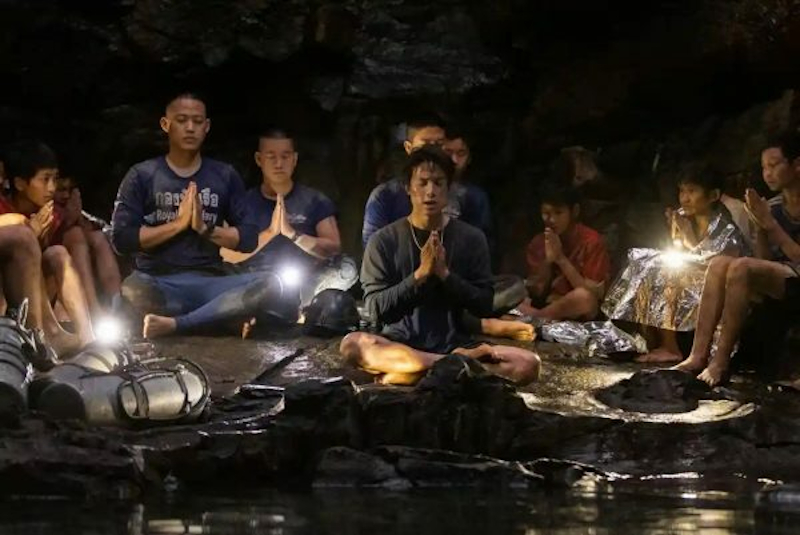
With Netflix having already secured the rights to the boys’ stories – a miniseries Thai Cave Rescue (2022) is coming to Netflix US in September 2022 – other productions had to concentrate on other aspects of the narrative, the most obvious of which was the divers who participated in the rescue attempt. First out of the gate was Thai production The Cave (Tom Waller, 2019), a quasi-documentary restaging the rescue using a number of divers playing themselves, slightly reworked for the American market as Cave Rescue (Tom Waller, 2022).
Meanwhile, British producer P J van Sandwijk of Storyteller Productions secured the rights to the story of some of the other divers which he split into two productions: the first was the documentary miniseries The Rescue (Jimmy Chin, Elizabeth Chai Vasarhelyi, 2021) for National Geographic which can be found on Disney+. The second was this one which also involved British producer Gabrielle Tana (The Dig, 2021; Minamata, 2020; Philomena, 2013) with whom he commissioned a script from writer William Nicholson (Gladiator, 2000; Shadowlands, 1993 and 1986) which found its way to Hollywood heavyweight producer-director Ron Howard (Solo: A Star Wars Story, 2018; Apollo 13, 1995, Splash, 1983), at which point it was almost inevitably bound to become a big, larger than life movie.
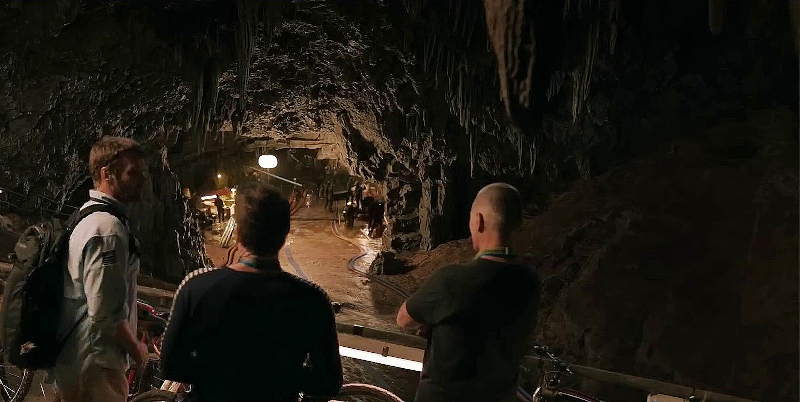
Unlike The Cave / Cave Rescue, which was shot mostly in various caves in Thailand including in the Tham Luang system where the real life events occurred, Howard shot much of his movie in South Australia, partly because of pandemic restrictions on travel, from where he remotely directed a unit in Thailand itself for exterior establishing shots and shots of the local village, among other things. The start of certain scenes set inside the caves is overlaid with detailed maps helpfully showing you which cavern or tunnel you’re in, on one occasion superimposing the map of the cave onto a shot of the mountain range to give you an idea of where the caves and tunnels are situated in relation to the mountain’s exterior, physical geography.
Howard has the good sense to use Thai actors speaking Thai (with English subtitles) playing the locals alongside English-speaking actors playing Brits and an Australian who’ve flown in to help. He’s also surprisingly sympathetic to Thai culture and includes the Princess Nang Non, the goddess of the local cave, although not in that much detail.
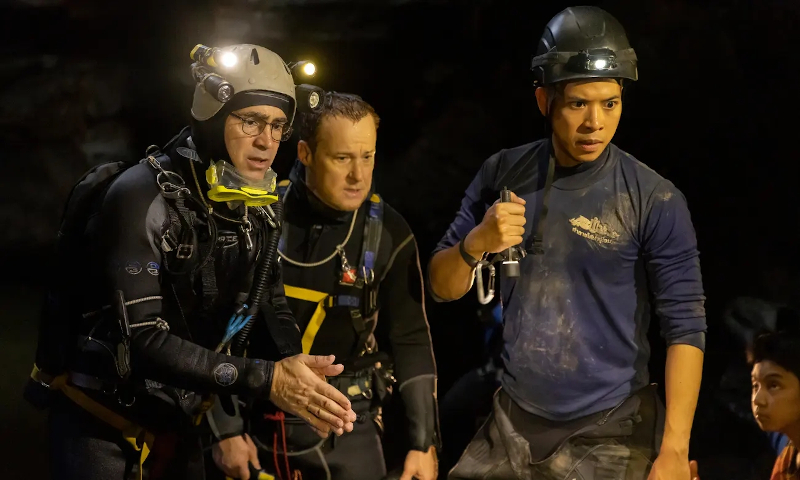
It’s strange to watch Thirteen Lives after The Cave / Cave Rescue, because both are based around the story of specific divers but omit others. So you watch the films and the names of the rescuers are different. What appears to have happened, during the screenwriting process to make the story easier to follow,and presumably at least partly because of rights deals signed, is that the story has been simplified by taking out certain of the real life rescuers, a perfectly reasonable course of action if you’re trying to tell a story within a limited amount of time. Both films focus on real people who were involved, but they leave out others to end up with a largely different cast list of foreign rescuers in each case. Both films feature the local Navy SEAL divers as a group of secondary characters.
Howard’s film centres around two cave rescue divers who come over from Britain to help, Rick Stanton (Viggo Mortensen) and John Volanthen (Colin Farrell), who themselves later bring in further divers Aussie Richard Harris aka ‘Dr. Harry’ (Joel Edgerton), who is also a qualified anaesthetist, and Brits Jason Mallinson (Paul Gleeson) and Chris Jewell (Tom Bateman). In Nicholson’s screenplay, Volanthen is initially the more responsible one while Stanton is the less trustworthy one given to begging custard creams off the other, then eating more than his promised limit, although as the narrative progresses both are portrayed a competent and reliable. ‘Dr. Harry’ is brought in when the other two are desperate and think he might have a solution, however improbable it might seem: the kids must be sedated with Ketamine to prevent panicking and overpowering their rescuers, which means that they must be fitted with foolproof breathing apparatus to survive being pulled unconscious through underwater passages. Mallison is what you might call the reliable supporting diver of the cast, while the younger and comparatively inexperienced Jewell is the one who gets into trouble in the caves.
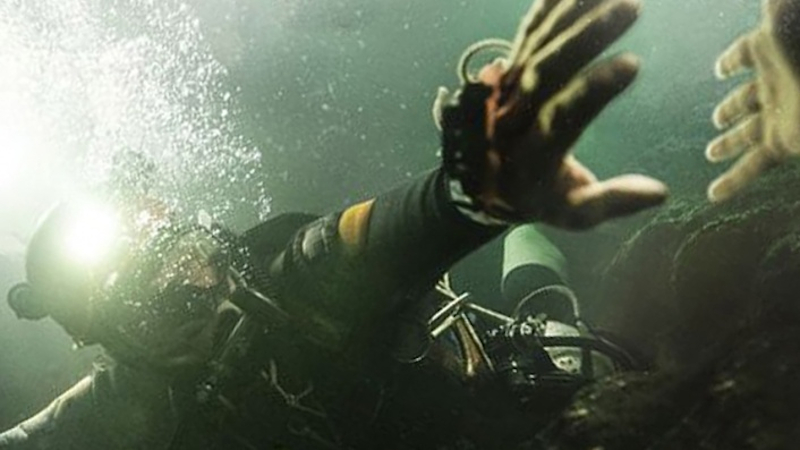
Unlike The Cave / Cave Rescue, these are non-divers who had to work with real divers to understand how they should behave underwater. While none of the cast signed up for the film intending to do all their own underwater stunts, it worked out that way and when you see the divers underwater in caves or tunnels (all of which are studio sets, and pretty impressive too thanks to production designer Molly Hughes), they are the actual actors not the stunt doubles. This means that you’re seeing them deliver the required emotions in specific underwater scenes, although whether that adds anything over and above having such scenes performed for real by real life divers is a moot point (watch both The Cave / Cave Rescue and this and decide for yourself).
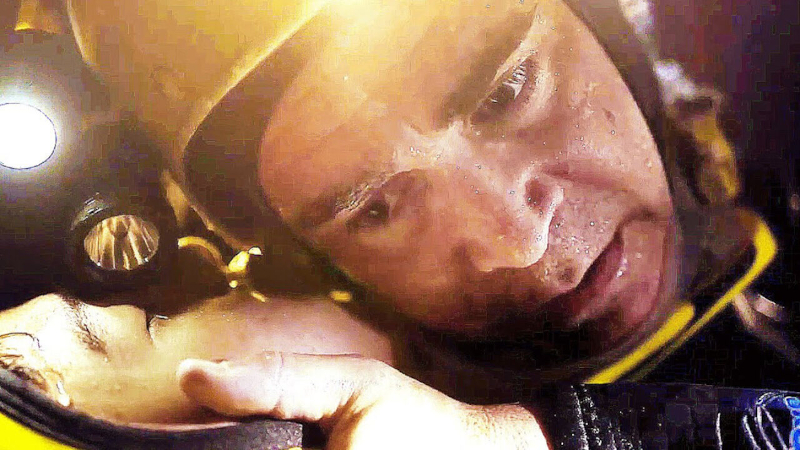
The cinematography in Thirteen Lives by Thai national Sayombhu Mukdeeprem (Suspiria, 2018; Call Me By Your Name, 2017, both Luca Guadagnino) constantly holds the attention, although you might make a case that something a bit murkier where you can see barely any distance in front of your face might be truer to the conditions under which real life rescue took place.
Something that comes through loud and clear is the general goodwill of the Thai people in desiring the safe return of the trapped boys.
A subplot concentrates on what’s happening above ground as a Thai water engineer turns up and with an army of locals helping him attempts to plug sinkholes through which rainwater can enter the caves. A particularly nicely rendered incident has a local improvise water pipes from wild bamboo when the supply of pipes runs out.
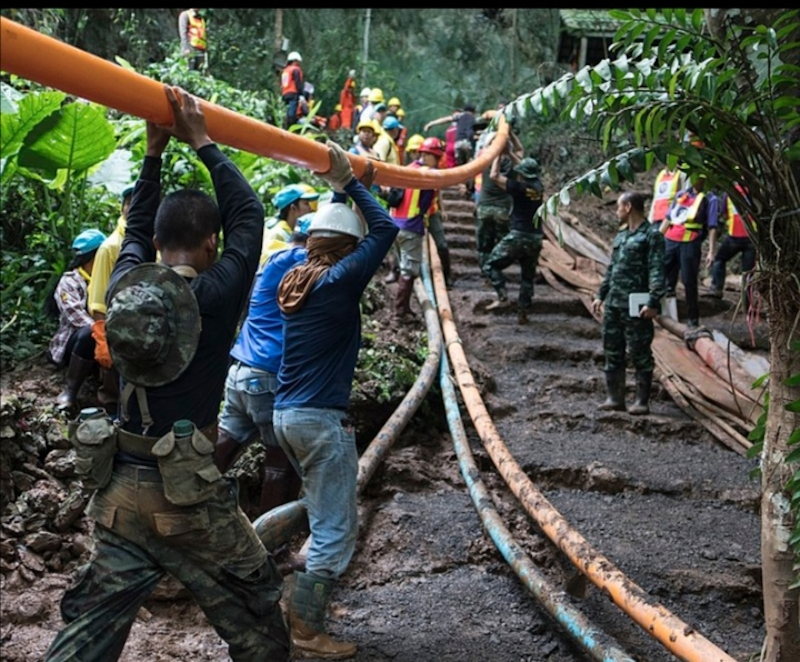
In the end, it’s a drama that gets under the skin of the divers attempting this act of heroism in the conditions under which they found themselves working. As the existence of the various films and TV series on this subject demonstrates, the original event remains a fascinating story with great potential to connect with audiences on a number of levels. Howard’s film will certainly hold your attention for its roughly two and a half hours, although one has to admit it plays much better on a large cinema screen than it does on home viewing, where sadly most people are likely to see it when it comes out on Amazon Prime.
Thirteen Lives is out in cinemas in the US and the UK on Friday, July 29th and globally on Amazon on Friday, August 5th.
Trailer:
